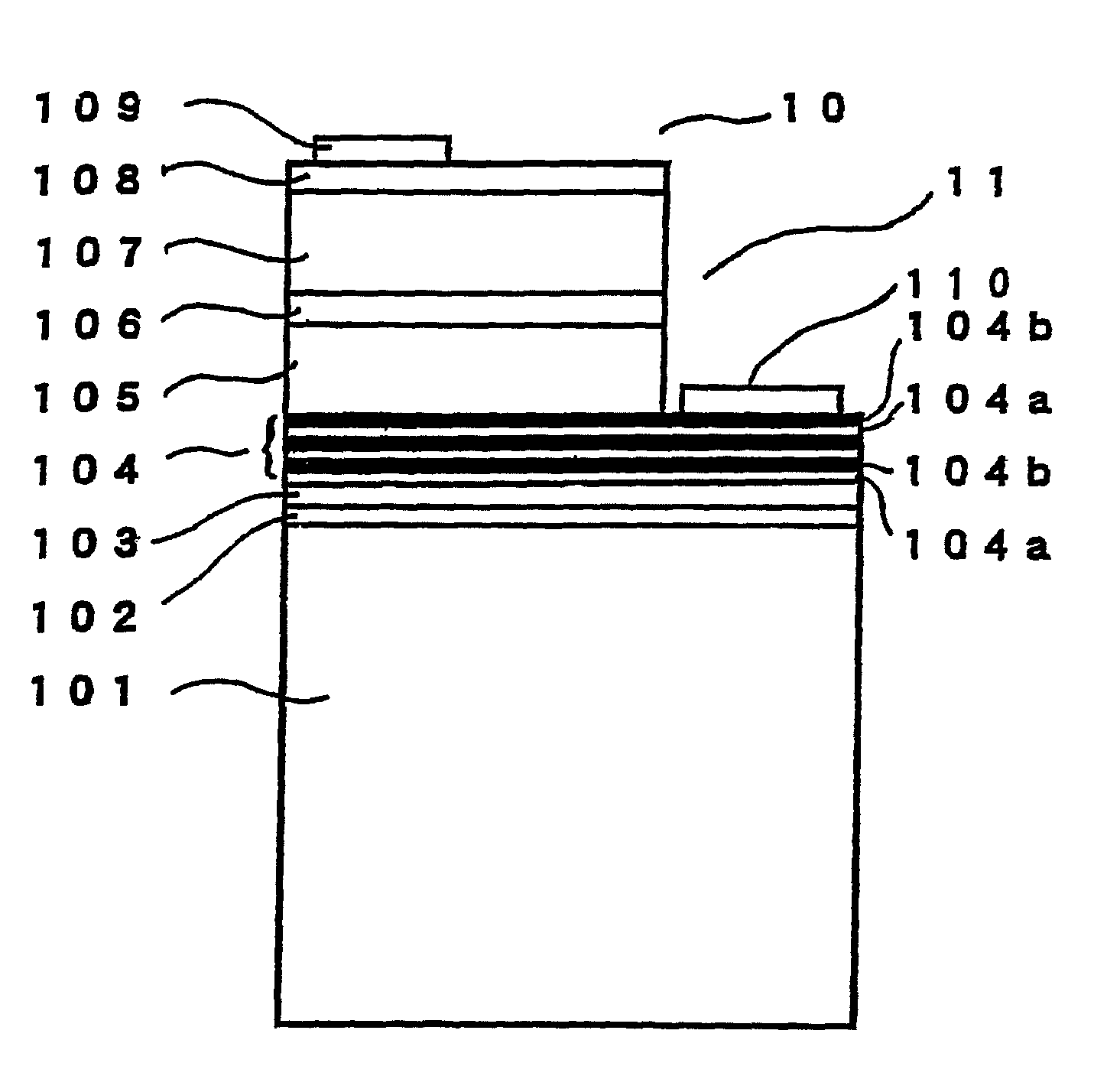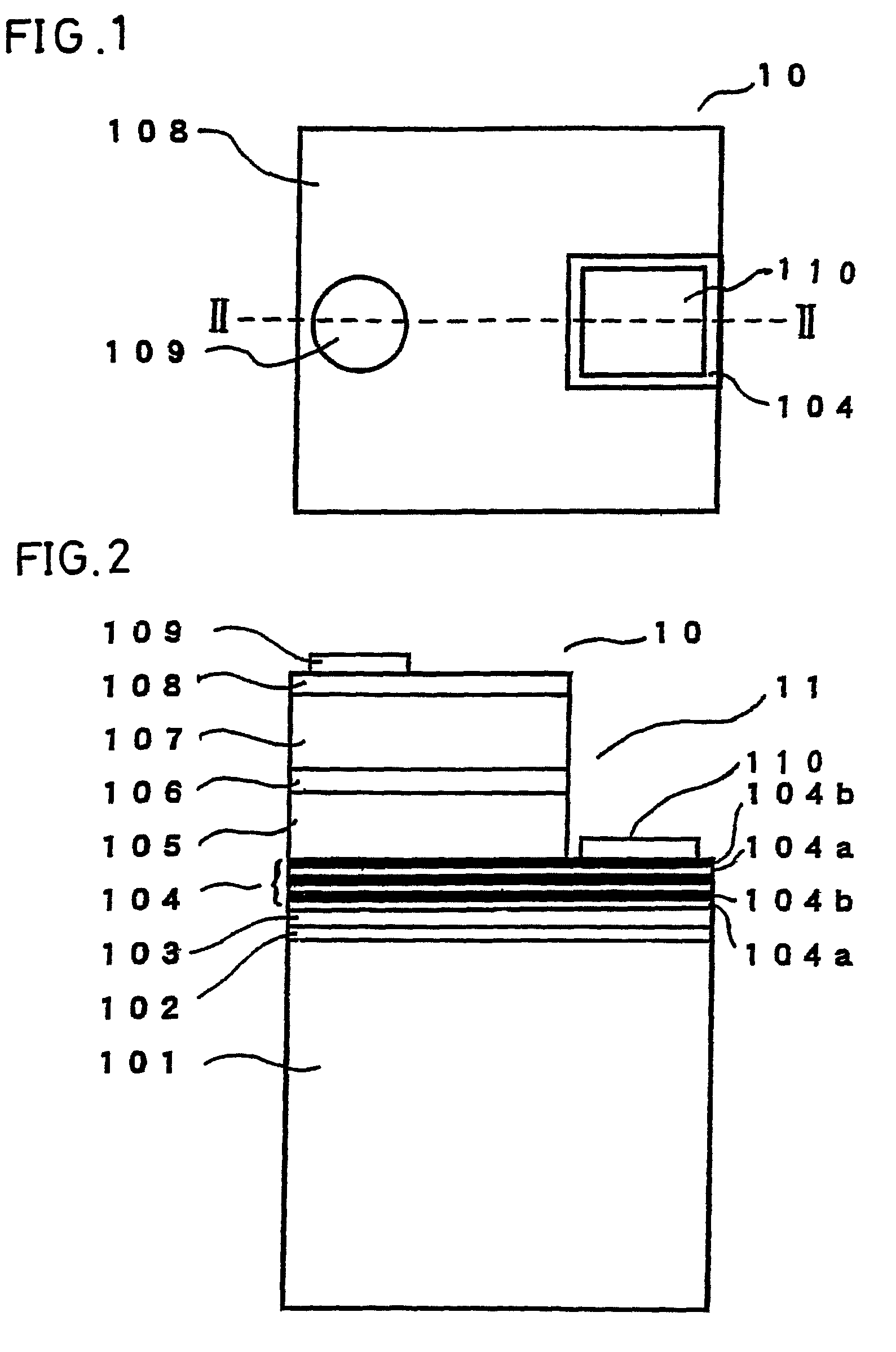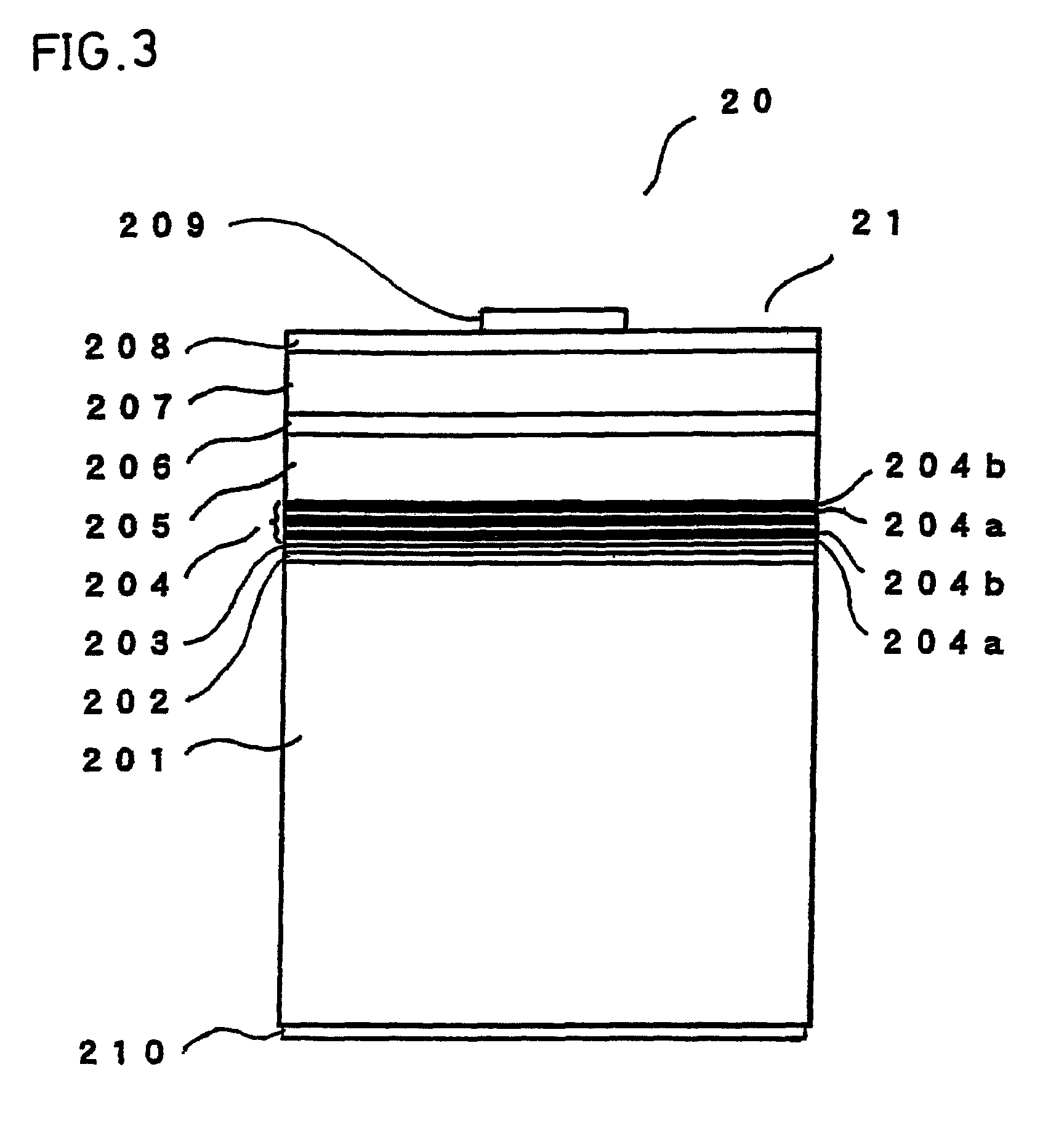Method of manufacturing a semiconductor device having a group-III nitride superlattice layer on a silicon substrate
a technology of nitride superlattice and semiconductor devices, which is applied in the direction of semiconductor lasers, crystal growth processes, polycrystalline material growth, etc., can solve the problems of high breakdown voltage properties against static electricity, difficult to fabricate field-effect transistors (fets) of low loss, etc., and achieves excellent crystallinity, stably form, and few crystal defects
- Summary
- Abstract
- Description
- Claims
- Application Information
AI Technical Summary
Benefits of technology
Problems solved by technology
Method used
Image
Examples
embodiment 1
[0074]In Embodiment 1, the present invention will be described in detail by taking, as an example, a case where a light emitting diode (LED) is fabricated from an epitaxially stacked structure including a silicon carbide layer of a nonstoichiometric composition provided on a (111) silicon single crystal substrate whose surface is a (111) crystal plane, a hexagonal Group III nitride semiconductor junction layer, a superlattice-structured layer constituted by hexagonal Group III nitride semiconductor layers.
[0075]The plane structure of a semiconductor LED 10 fabricated in Embodiment 1 is schematically shown in FIG. 1. The sectional structure of the LED 10 of FIG. 10 taken along the broken line II-II is schematically shown in FIG. 2.
[0076]In the fabrication of the LED 10, a P type silicon single crystal having a (111) crystal plane as the surface, to which boron (element symbol: B) is added, was used as a substrate 101. After the substrate 101 was transported into a growth chamber for ...
embodiment 2
[0085]In Embodiment 2, the present invention will be described in detail by taking, as an example, a case where a light emitting diode (LED) is fabricated from an epitaxially stacked structure including a silicon carbide layer of a nonstoichiometric composition provided on a (001) silicon single crystal substrate whose surface is a (001) crystal plane, a cubic Group III nitride semiconductor junction layer, a superlattice-structured layer constituted by cubic Group III nitride semiconductor layers.
[0086]The planar structure of a semiconductor LED 10 fabricated in Embodiment 2 is schematically shown in FIG. 2.
[0087]In the fabrication of the LED 20, an N type silicon single crystal having a (001) crystal plane as the surface, to which phosphorus (element symbol: P) is added, was used as a substrate 201. After the substrate 201 was transported into a growth chamber for MBE growth, the substrate 201 was heated to 800° C. in a high vacuum of approximately 5×10−7 pascals (Pa). Heating at ...
embodiment 3
[0096]The present invention in this embodiment will be concretely described by taking, as an example, a case where an LED having a Group III nitride semiconductor junction layer composed of aluminum nitride formed by nitriding a metal aluminum film is fabricated.
[0097]As described in Embodiment 1 above, a cubic 3C-type silicon carbide layer was formed on a (111) silicon single crystal substrate whose surface is a (111) crystal plane. Next, within an MBE growth chamber, aluminum (Al) beams were radiated onto the surface formed from a (111) crystal plane of the silicon carbide layer having a lattice constant of 0.450 nm, whereby an Al film was formed. The film thickness of the Al film was set at approximately 3 nm.
[0098]Next, by use of an ECR (electron cyclotron resonance) type radio-frequency (RF) plasma generator provided in the MBE growth chamber, a nitrogen plasma was generated within the chamber. After that, nitrogen radicals in the nitrogen plasma were selectively extracted and ...
PUM
| Property | Measurement | Unit |
|---|---|---|
| lattice constant | aaaaa | aaaaa |
| lattice constant | aaaaa | aaaaa |
| lattice constant | aaaaa | aaaaa |
Abstract
Description
Claims
Application Information
 Login to View More
Login to View More - R&D
- Intellectual Property
- Life Sciences
- Materials
- Tech Scout
- Unparalleled Data Quality
- Higher Quality Content
- 60% Fewer Hallucinations
Browse by: Latest US Patents, China's latest patents, Technical Efficacy Thesaurus, Application Domain, Technology Topic, Popular Technical Reports.
© 2025 PatSnap. All rights reserved.Legal|Privacy policy|Modern Slavery Act Transparency Statement|Sitemap|About US| Contact US: help@patsnap.com



